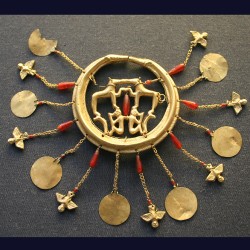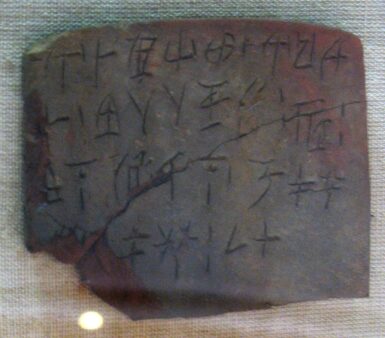Review of Mark Cook, Rewriting History: The Decipherment of Linear A and a History of Egypto-Cretan Relations in the Middle and Late Bronze Ages, Sydney, 2022, ISBN 978-0-646-86541-6*
Can an accountant crack the most mysterious ancient Mediterranean script and bring an impressive prehistoric culture into the realm of history? This is what Mark Cook (FCA, JIEB, MPhil, MA) is attempting to do in his groundbreaking study “Rewriting History: The Decipherment of Linear A and a History of Egypto-Cretan Relations in the Middle and Late Bronze Ages”.
In his work, Cook, a Chartered Accountant by profession, applies the data-sorting expertise gained by working with modern administrative spreadsheets to decipher Linear A, a script used in Middle Bronze Age Crete’s administrative records. “The Linear A Tablets are partially complete accounting records so an accountant reviewing them makes sense”, he explains in p. 1. To interpret the signs used in the Minoan datasets, Cook brings them side by side with those used in ancient Egyptian writing systems, as these present a cracked code contemporary to his research focus. Progressing with his theory, he observes affinities between Linear A and the Egyptian systems. His observations are then associated with reassessed historical information on the relations between Egypt and Crete during the Middle and the first part of the Late Bronze Age. The end product of Cook’s research is a majestic, awe-inspiring volume, which aims high. Still, how far does this research actually reach?
In the first lines of his work, Cook offers a disclaimer to what follows, by introducing himself and setting his goal. He proceeds with describing his method, which is based on what Alice Kober did to reach far into the cracking of Linear B, which proved to be the earliest written form of Greek. Like Kober, he is focusing on “the obvious” that many scholars before him ignored. At the same time, he moves away from the logical hypotheses. Indeed, his quest starts as he sees that, despite some symbols are common in Linear A and Linear B, the two scripts are not the same. This leads him away from attempts to interpret Linear A signs by using Linear B ones. He also dismisses the hypothesis that the phonetic values of Linear A and B signs are the same, moving away from concluding remarks on Linear A that had led previous scholars to the dead end of an “incomprehensible Minoan Language”. Instead, he focuses on numerical values and, while he records administrative continuity between the systems that used Linears A and B, he recognizes that scriptorial change might reflect political change. At the same time, he suggests there is an affinity between the Linear A fraction symbol for zero and the Egyptian hieroglyph sign F35 (according to the standard sign list by Alan Gardiner), which is used, among others, for “zero” or “nothing”. This is where everything begins.
In the following chapters, Cook will argue that Linear A is in fact a form of ancient Egyptian shorthand, which derives from the standard Egyptian hieroglyph and hieratic writing systems. Most importantly he suggests that Linear A’s use reflects that Crete was, at some point, under Egypt’s administrative control. In the course of his work, he will track the transformation of hieroglyphs and hieratics to Linear A and he will use the proto-Sinaitic alphabets in Egypt’s Sinai territories to justify why Crete’s Egyptian purported administrators had to actually compile a new version of their script rather than just using hieratic. Then he evaluates archaeological evidence of Egyptian presence in Crete, actually defining two phases of Egypto-Cretan relations: a. A period of strong Egyptian influence in Crete (MM IIB to LM IB for Crete and 13th to early 18th Dynasty for Egypt, c. 1800 – 1500 BCE) and b. A 30-year-long period when Crete is something like an Egyptian protectorate (within LM IB, roughly between the reign of Thutmose III and Amenhotep III). However far-fetched, the latter is supported by the reinterpretation of Egyptian imports found in Cretan sites, Egyptian inscribed objects, pictorial records of Aegean naval and diplomatic activity from Egypt and the Aegean, and the pinpointing/explanation of lacunae into the records of Egyptian campaigns of Thutmose III, whose reign is considered as falling within the time. The very interpretation of Linear A as Egyptian hieroglyphs is also taken as evidence at face value. The study ends with a large section dedicated to interpreting Linear A evidence following the new method.
The study is remarkable at least at the level of comparison between Egyptian hieroglyphs and Linear A signs. To an informed reader, the tables tracking the evolution of a hieroglyphic sign into a Linear A one seem as relevant as tables showing Proto-Sinaitic or even the much more standard hieratic as a cursive hieroglyph script. In support of that, the way the author “reads” the study’s large corpus of inscriptions actually seems plausible. On the downside, the bibliography supporting the theory, however rich, does not include seminal latest works on the issue of Linear A such as Esther Salgarella’s SigLA paleographic database and associated research, or Artemis Karnava’s In the land of Lilliput: writing in the Bronze Age Aegean (2015). In search of a “Rosetta Stone” for Linear A, the article of Evangelos Kyriakidis on Indications on the Nature of the Language of the Keftiw from Egyptian Sources. Ägypten und Levante, Vol. 12 (2002), pp. 211 – 219, would be of help. I am not exactly suitable to comment on the accountancy-related methodology used in the study as the author is much more of an expert. The same applies to paleographic methods. Still, I would feel safer as a reader if the bibliography included titles on records of economic administration in ancient Egypt, such as the works of David Warburton on discal practices (e.g. State and Economy in Ancient Egypt: Fiscal Vocabulary of the New Kingdom), J.J. Janssen’s study on the practice of elite gift-giving or tribute (inw) Gift giving (1982) and Edward Bleiberg’s The Official Gift in Ancient Egypt (1996).
Gift-giving as a subject is somehow connected to the question of Crete’s short subjugation to Egypt, as it is combined with Egypt offering “the breath of life” (TAw n anx). The phrase, recorded in connection to foreign lands including “The Islands in the Middle of the Great Green” (the Aegean area including Crete), is interpreted by Cook as expressing these lands’ conquest by Egypt, and is brought forward as primary evidence that Crete was part of the “Egyptian Empire”. Indeed, official Egyptian military texts use “the breath of life” as a term hinting at the submission of foreigners to Egypt. In the Egyptian worldview, Egypt represents everything positive, while everything outside it represents chaos and death. In practice, the term designated peace agreements between Egypt and other state entities which could be vassal states to Egypt but also independent states and Great Powers (see G. Kontopoulos, 2019, “The Egyptian diplomatic system in the Late Bronze Age beyond the terms of “brotherhood” & “equality”, Ph.D. Thesis, University of the Aegean, p. 28, 83).
Also, regarding the Egyptian territory, the Egyptian border was indeed surrounded by a broad Egyptan-controlled buffer zone, extending to the south along modern-day Sudan, up to Northern Syria to the north, and well into the northern border of modern-day Saudi Arabia to the east. The archaeological record of these areas demonstrates networks of settlements with a strong Egyptian cultural background as well as monumental inscriptions in key sites visualizing Egyptian presence (boundary and commemorative stelae). It would be worth it for the author to justify the absence of these elements from Crete, especially taking account of works on the matter such as Ellen Morris’ Ancient Egyptian Imperialism (2018) and The Architecture of Imperialism: Military Bases and the Evolution of Foreign Policy in Egypt’s New Kingdom (2005), C. Vogel’s This far and not a step further! The Ideological Concept of Ancient Egyptian Boundary Stelae (2011), and my own On Borders and Expansion: Egyptian Imperialism in the Levant during the Ramesside Period (2021). In any case, Crete was directly inaccessible before the 14th c. BCE (Kelder and Cline, In the Midst of the “Great Green”: Egypto- Aegean Trade and Exchange, 2018, p. 28). On the position and status of Crete within this framework, it is worth browsing the complete works of Professor Louise Hitchcock (University of Melbourne) and also noticing what Ann E. Killebrew states in p. 26 of her Biblical Peoples and Ethnicity: An Archaeological Study of Egyptians, Canaanites, Philistines and early Israel (2005) and, particularly, the doctoral study of Maria Aspasia Bealby on Aegean-Egyptian Relations (1900 – 1400 BC) (2015) where the question of colonization is directly tested through the approaches of World Systems Theory and Game Theory (p. 392-443).
Concluding, Mark Cook’s effort to crack Linear A is not only enormous but also noteworthy. This is a book worth reading for the way the author organizes the material and deals with it. At the same time, Cook’s approach to research is exemplary and noble, presenting his findings but also leaving room for constructive criticism and fruitful dialogue. Regardless of whether the interpretations Cook offers for Linear A groups bring us closer to finally deciphering the script, there is still a lot to review before considering that any affinities between Linear A and Egyptian hieroglyphs might suggest that Crete had somehow been colonized, conquered, or controlled by Egypt. To draw such a conclusion would require stronger and broader theoretical support which could be the author’s future goal.
Zeta Xekalaki (Ph.D. Egyptology, University of Liverpool)
*Archaeology & Arts wants to thank Mark Cook for providing us with a limited edition publication of his work for review purposes.

